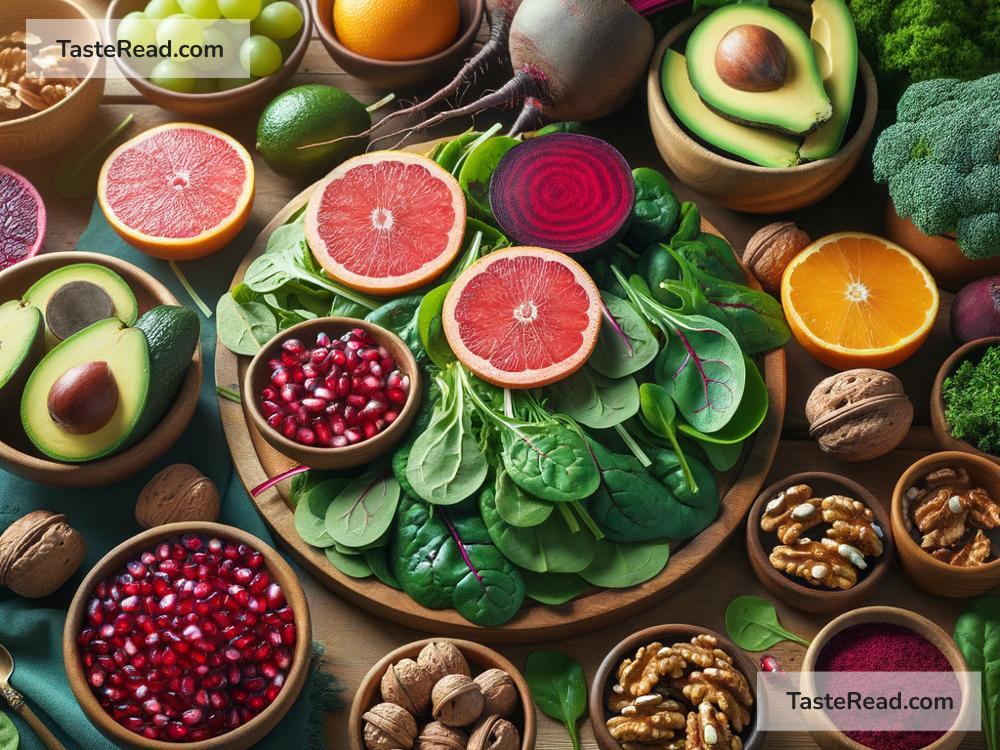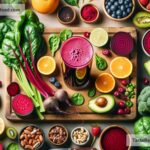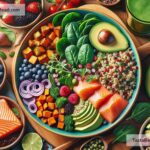Boost Your Body’s Oxygen Levels with These Foods
Oxygen is essential for life. Every cell in your body needs oxygen to function properly. The oxygen we breathe is carried by our blood, delivering it to our organs and tissues. But did you know that certain foods can help improve your body’s oxygenation? Yes, the way you eat can help your body absorb and transport oxygen more efficiently.
In this article, we’ll explore simple, everyday foods that can boost your oxygen levels. By choosing the right foods, you can support healthy blood flow, improve your energy, and feel great! Let’s dive in.
Why Oxygen Matters
Oxygen helps fuel our cells, burns nutrients for energy, and keeps us alive. The more oxygen your body gets, the better it can perform tasks like thinking, moving, and healing. Poor oxygenation can lead to fatigue, dizziness, and difficulties concentrating.
Factors like stress, smoking, or certain medical conditions can reduce oxygen levels. However, eating the right foods can counteract these effects and promote better oxygen flow throughout your body.
Foods That Boost Oxygen Levels
Certain foods can increase oxygen in the body by promoting blood circulation, improving lung function, or supporting red blood cell production. Here are some of the best options:
1. Leafy Greens
Leafy greens like spinach, kale, and Swiss chard are rich in chlorophyll, the green pigment plants use for photosynthesis. Chlorophyll is nature’s oxygen booster. Packed with iron, chlorophyll helps your blood carry oxygen more effectively.
- Why they’re good for oxygen: Iron supports the production of hemoglobin, the protein responsible for carrying oxygen throughout your body.
Pro tip: Swap iceberg lettuce for spinach or kale in salads to maximize oxygen benefits!
2. Beets
Beets are famous for their ability to improve blood flow. They contain nitrates, which the body turns into nitric oxide, a compound that relaxes blood vessels. This allows oxygen to flow more freely in the bloodstream.
- Why they’re good for oxygen: Improved circulation means more oxygen reaching your muscles and tissues.
Pro tip: Enjoy beet juice as a morning drink to get an immediate boost in oxygen efficiency.
3. Citrus Fruits
Oranges, lemons, and grapefruits are packed with vitamin C, which plays a critical role in oxygen absorption. Vitamin C also helps your lungs stay healthy, making it easier for your body to use the oxygen you breathe.
- Why they’re good for oxygen: They protect lung tissues and support the immune system, which is also tied to oxygenation.
Pro tip: Start your day with a glass of fresh orange juice or squeeze lemon into your water.
4. Watermelon
Watermelon contains lycopene, the antioxidant responsible for its red color. Lycopene improves cardiovascular health and helps oxygen circulate more efficiently.
- Why it’s good for oxygen: It’s hydrating and supports heart health, which means better blood flow and oxygen transport.
Pro tip: Snack on watermelon during hot days to stay hydrated and boost oxygen levels at the same time.
5. Whole Grains
Whole grains like oats, quinoa, and brown rice are excellent sources of complex carbohydrates. Your body uses these carbs for energy. Whole grains also contain iron, fiber, and B vitamins, which help your body carry and utilize oxygen.
- Why they’re good for oxygen: Better energy translation means your oxygen is used efficiently by cells.
Pro tip: Swap white rice or bread for hearty brown options to enjoy sustained energy and oxygen benefits.
6. Berries
Blueberries, raspberries, and strawberries are small, delicious powerhouses filled with antioxidants. Antioxidants protect your cells from damage and support healthy blood flow.
- Why they’re good for oxygen: Healthy blood flow means oxygen gets to your cells more easily.
Pro tip: Add berries to snacks, smoothies, or even desserts.
7. Avocados
Avocados are packed with monounsaturated fats, which are good for your heart and blood vessels. They also contain magnesium, an essential mineral that boosts oxygen utilization inside your body.
- Why they’re good for oxygen: Nutrients in avocados help your cells and muscles efficiently use oxygen.
Pro tip: Spread avocado on toast instead of butter for a healthy oxygen boost.
8. Garlic and Ginger
Both garlic and ginger improve circulation, helping oxygen-rich blood move through your body. Garlic contains compounds like allicin, while ginger has anti-inflammatory properties, keeping your lungs healthy and oxygen levels high.
- Why they’re good for oxygen: Good circulation means oxygen reaches every part of your body.
Pro tip: Use garlic and ginger in soups, teas, or stir-fry for maximum benefits.
Hydration and Oxygenation
Besides eating the right foods, staying hydrated is equally important for oxygenation. Your blood is nearly half water, so drinking enough fluids helps your body carry oxygen more effectively. Stick to water, herbal teas, coconut water, or infused water with fruits like lemon or cucumber.
Quick Tips to Improve Oxygen Levels
- Choose iron-rich foods like beans, lentils, and leafy greens.
- Eat foods high in antioxidants, including berries, nuts, and dark chocolate.
- Stay hydrated to keep your blood flowing smoothly.
- Avoid processed foods and excessive sugar, which can lower oxygen efficiency.
Conclusion
Your body relies on oxygen to thrive, and the foods you eat can make a big difference. Adding oxygen-boosting foods to your diet doesn’t have to be complicated. Incorporate leafy greens, beets, citrus fruits, and other healthy options into your meals to help your blood carry oxygen efficiently. Don’t forget to drink plenty of water and stay hydrated!
With good nutrition, you’ll feel more energized, breathe easier, and support your heart and lungs. So, start today—eat smart and give your body the oxygen it needs.


